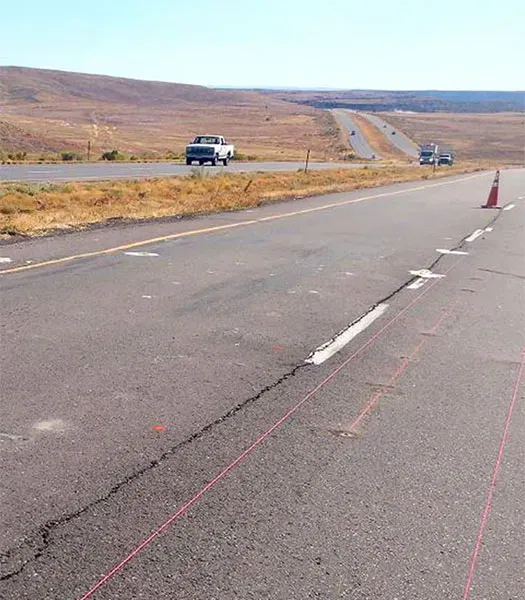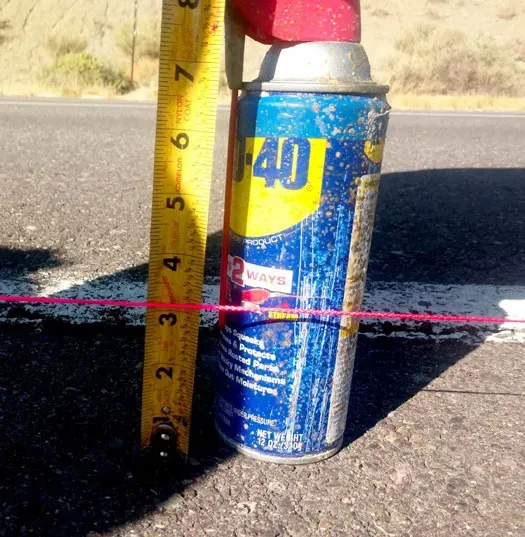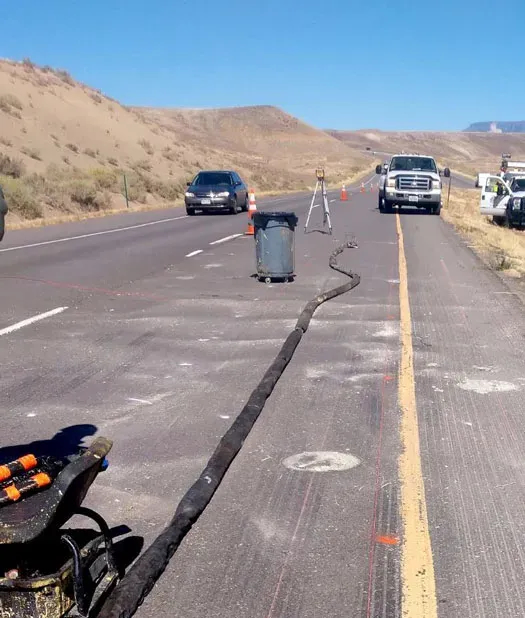Asphalt Pavement Preservation for CDOT
Problem
On US 50 south between Grand Junction and Delta, Colorado, DOT Region 3 engineers were looking at a pavement heaving problem at milepost 54.5 that presented significant ride quality and safety issues for the traveling public. Expansive soils deep in the subgrade were at work, and officials knew that the speed at which the pavement system can change in that area makes it difficult to maintain the roadways. In addition to the challenges they were facing with rapidly changing soil conditions, a drain culvert at the location was leaking fines through faulty joints, resulting in voids and additional road settlement problems. They called URETEK.
Analysis
A quick visit to the site and some research into previous jobs confirmed URETEK’s assumptions about the soils in the area. Additional evaluation of the leaking culvert confirmed early suspicions about soil fines passing through open joints. It was quickly determined that the URETEK Deep Injection® (UDI) process would be the ideal solution for Colorado DOT at this location.
Solution
URETEK crews performed UDI in a grid pattern that allowed the polymer to strategically expand and stabilize the subgrade and subbase while lifting the pavement in both directions to taper out the heave and restore ride quality and safety for drivers on Highway 50. Additionally, crews injected along the leaking culvert to seal the faulty joints, compact loose soils, fill voids, and lift the surrounding pavement back to the original grade.
Result
Colorado DOT officials were pleased with the results. The total repair time compared to other methods was dramatically reduced, as removal and replacement of the expansive soils and the faulty storm drain was not required. As such, the repair job involved virtually no environmental footprint. During the project, one lane remained open to minimize traffic disruption. Finally, the URETEK repair solution represented a tremendous dollar savings for Region 3 engineers when compared to rip and replace methods.
URETEK Deep Injection® (UDI)
Widely referenced throughout our industry, UDI involves the injection of structural polymer into base and subgrade soils to increase the load bearing capacity. This is achieved by injecting the polymer through small holes drilled directly through the pavement structure to depths determined by site-specific analysis. Our URETEK 486 Star® material flows easily into voids and weak zones within the soil mass below. Through a controlled chemical reaction, the expanding polymer compacts surrounding soils and applies a controlled pressure on targeted areas of the affected pavement above. If needed, a multi-injection design plan is utilized to gently return the pavement to its original grade. The composite material quickly cures into a strong, dimensionally stable, and water-resistant geo-material, providing years of reliable service.
URETEK 486 Star®
URETEK 486 Star® polymer is a two-component, high-density, expanding thermoset polyurethane system. It was developed to be the ideal solution for under-sealing, void filling, lifting of settled pavement, stabilization and stiffening of weak soils, and for encapsulating and sealing buried infrastructure. URETEK 486 Star® is environmentally inert, non-toxic, and resists underground water erosion or weakening due to its industry-leading hydrophobic properties.


